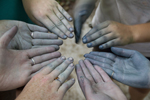IndiGrowing Blue at Indiana University
By Rowland Ricketts
In the spring of 2010, with the support of a New Frontiers in the Arts and Humanities Grant from Indiana University, I started the IndiGrowing Blue Project. The project's intention is two-fold: to create a first-hand experience for participants of the cycle of indigo (Polygonum tinctorium) farming and processing, and to lay a foundation for sustainable dye cultivation here on campus and in the region.
on the campus of Indiana University, May, 2010
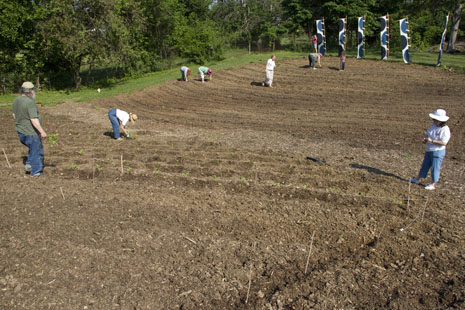
Indigo has been used by peoples throughout the world since ancient times. A wide variety of plants have been cultivated for their indigo content, with each plant selected for its compatibility with the climate where it is grown. For a long time, the transferring of the blue dye from plant to cloth remained a puzzle because of indigo's insolubility in water. By utilizing its local environment, each culture found a solution to this puzzle and developed its own method of processing the plants and vatting the dyestuff to color cloth.
| The indigo is left to flower and go to seed after the second harvest | The seed heads are allowed to ripen and are gathered after the plants have died in the fall |
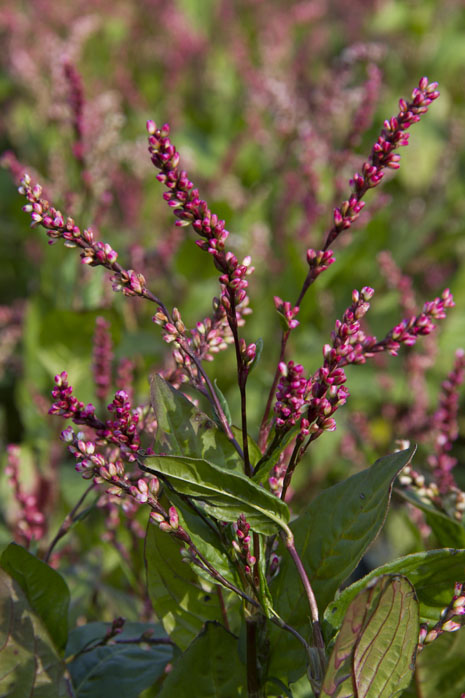 |
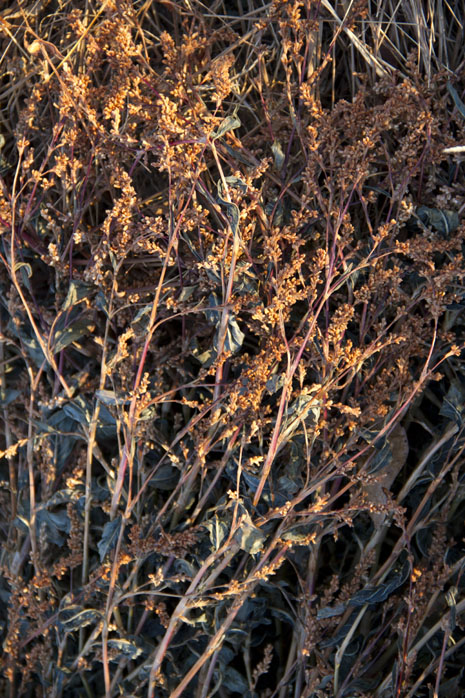 |
| Photograph Copyright by Rowland Ricketts | Photograph Copyright by Rowland Ricketts |
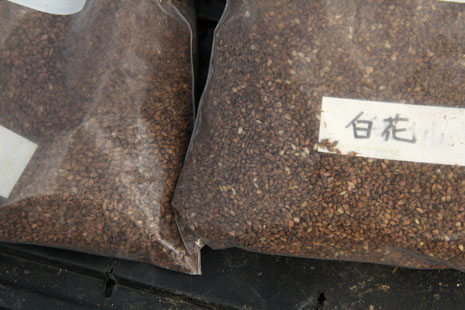
In Japan's temperate climate, this solution involved the harvesting, drying, and composting of Polygonum tinctorium leaves to make the dyestuff called sukumo. The cycle of sukumo production begins with seeds that were harvested and dried the previous fall. The seeds are planted in the spring, and the indigo is harvested, dried, and winnowed over the summer. In the fall the dried leaves are heaped in a large pile, moistened with water, and composted for 100 days. Once each week the pile is turned to ensure the even decomposition necessary to concentrate the indigo in the leaves. When the resultant sukumo is fermented in wood-ash lye for dyeing, it produces shades that range from the black of the night sky to the palest blue of a winter's dawn.
New Harmony Gallery of Contemporary Art, 2009
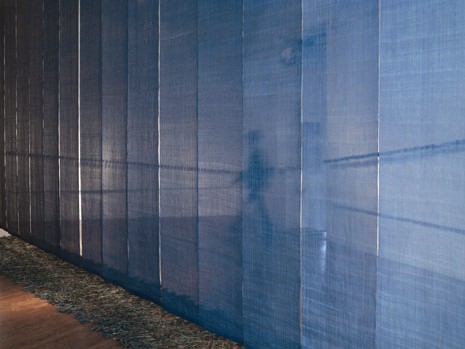
As an indigo farmer and dyer trained in this tradition through an apprenticeship in Japan, my artistic practice is concerned not only with what I make, but also how I make it. In our global era of mechanized mass production, with an overwhelming multitude of synthetic coloring options available to artists, my choice to plant, transplant, weed, harvest, dry, winnow, compost and ferment indigo entirely by hand is deliberate.
| Watering seedling flats that have been covered with a seedling sheet |
Japanese indigo seedlings - kojyo-ko variety |
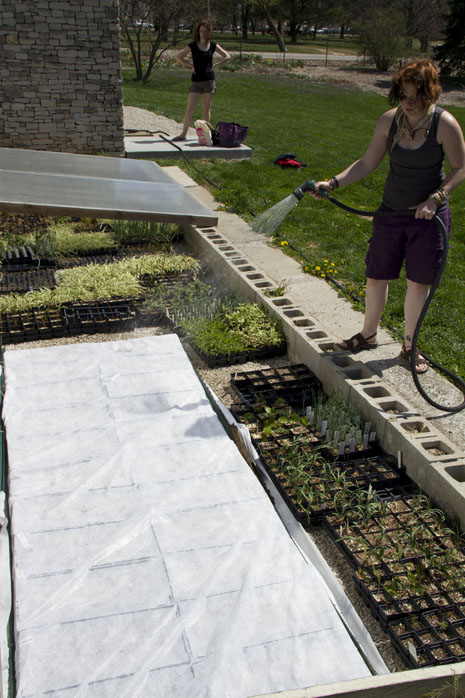 |
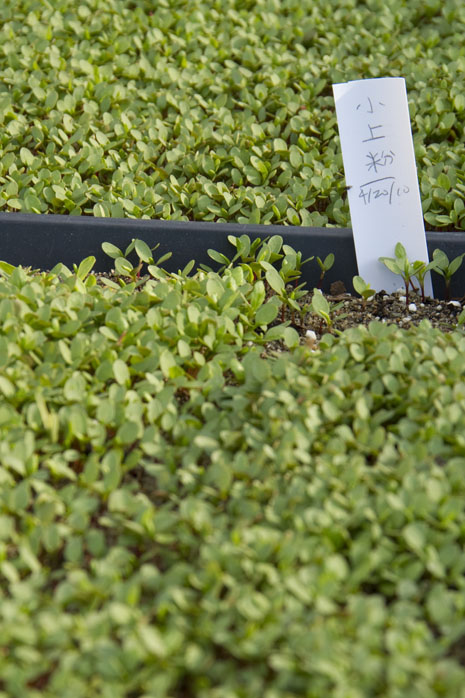 |
| Photograph Copyright by Rowland Ricketts | Photograph Copyright by Rowland Ricketts |
Through the cultivation of indigo, I am able to connect to the plant's historical, cultural, and physical roots, and to create links to all who have worked in this tradition before me.
Fifteen years of working with indigo, from the growing and processing of the plants to the finishing stages of dyeing has radically changed my own perceptions of my relationship to the environment and our society's modes of production and consumption. My interactions with indigo have caused me to reconsider and change the way I live and create in the world.
IndiGrowing Blue offers a first-hand experience of the Japanese indigo process. With particpants as collaborators in the production of the raw materials, the project seeks to forge a connection to older creative traditions in which objects were made from locally gathered or raised materials—traditions which were sustainable in their scope. These traditions, when undertaken as artistic endeavors in 21st century America, raise questions about who we are, how we labor, our cultural patterns of production and consumption, and our relationship to the environment.
| Taking a break while the harvested indigo dries to do some fresh leaf dyeing. Here the leaves are being stripped from the stems in preparation. | Stomping the dried plants to separate the indigo-bearing leaves from the stems |
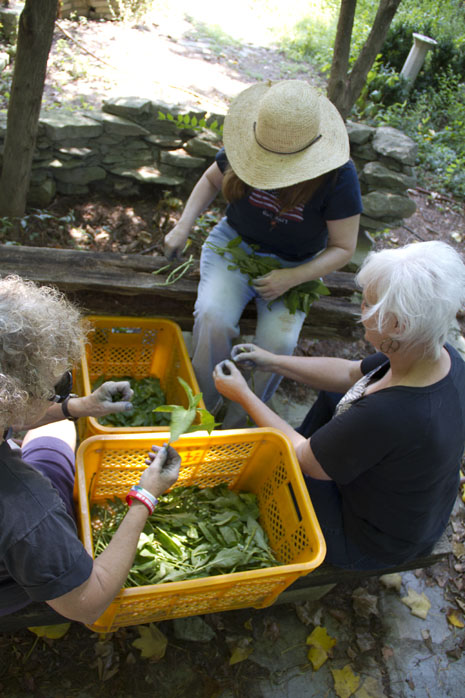 |
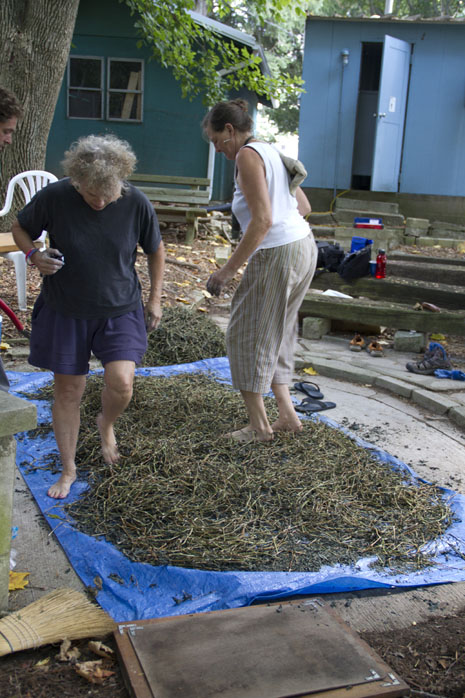 |
| Photograph Copyright by Rowland Ricketts | Photograph Copyright by Rowland Ricketts |
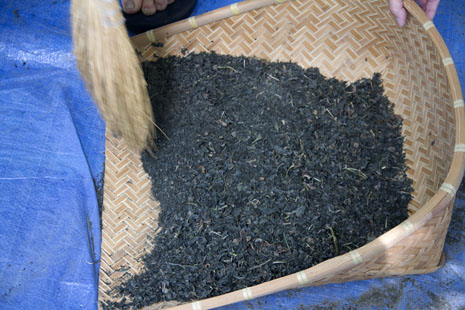
In 2010, the first year for growing indigo on campus at the Hilltop Garden and Nature Center, we harvested about 100 lbs. of dried leaves. During the harvests we also set up stations for dyeing with fresh indigo, providing a respite from the intense Mid-Western summer heat while the indigo was drying. In the late fall, seeds were gathered and dried over the winter. In early April those seeds were planted and have already sprouted–an encouraging start to the 2011 season in which we'll continue growing indigo and build the nedoko structure necessary for composting the dried leaves into the traditional Japanese indigo dyestuff called sukumo.
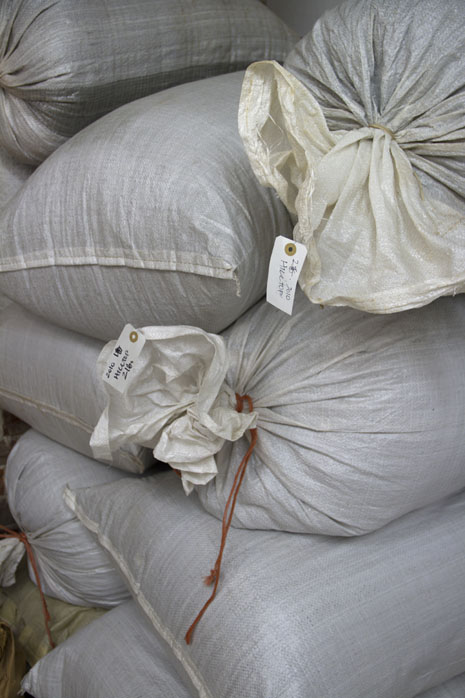
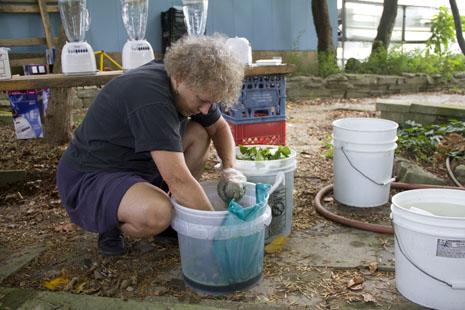
Anyone is welcome to participate in IndiGrowing Blue. Upcoming events like field preparation, transplanting, nedoko construction, harvesting, and eventually composting are announced on the projects website (www.indigrowingblue.com), and the project's Facebook Group (IndiGrowing Blue). To receive more information about upcoming events, please join the mailing list on the project's website. Please direct inquiries to: indigo@indiana.edu.
Rowland Ricketts is an Assistant Professor at Indiana University's Henry Radford Hope School of Fine Art. He trained in indigo farming and dyeing in Japan and received his MFA from Cranbrook Academy of Art.

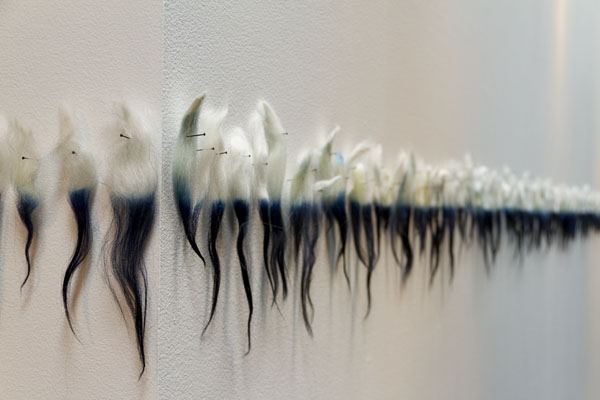
 Turkey Red Journal
Turkey Red Journal
